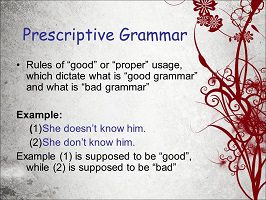What are Sentences
What are Sentences
sentences , in grammar, is a word or a set of words that express a meaning on their own, so they are considered autonomous elements.
A written sentence is characterized by always beginning with a capital letter and ending with a period unless it has question or exclamation marks, which replaces it.
How are sentences formed in English?
In the same way as in any language, the way of writing a sentence varies depending on its type . That is why we must first understand the different types of sentences.
The particles used in a sentence are:
- Subject : it can be both a proper, common name or a pronoun.
- Verb: subject to the verbal tense of the sentence, depending on the moment in which the main action occurs.
- Complements : they can be both direct, indirect, adverbial, adjective, etc.
- Conjunctions: used to connect the different parts of a sentence and make sense of it
Types of sentences
The sentences can be classified according to different criteria:
- Affirmative sentences
Affirmative sentences in English are those used to affirm a fact or situation. In the case of English, it is the same as in Spanish, working with the same structure:
Subject + Verb + Preached
Some examples:
- My dog is black. My dog is black.
- She is 7 years old. She is 7 years old.
- You have a big apartment. You have a large apartment.
In the case of negative sentences in English, they are used to report something wrong or express denials in assumptions, facts and situations. It has the same structure as an affirmative sentence in English, with the difference that the verb is accompanied by its auxiliary and the not (denial).
Subject + auxiliary + not + verb + predicate
Let’s see its application:
- I don’t want hotcakes from breakfast. I don’t want pancakes for breakfast.
- Will we not buy any tickets tonight? Won’t we buy tickets tonight?
A couple of rules that we have to keep in mind when it comes to negative sentences in English are:
- Auxiliary verbs ( do, be, have) , in this case we are using do that is present and did for the past. They go before the infinitive verb.
- Contractions DO + NOT, which are common: do not, and DID NOT +: did not.
- Comparative sentences
In the case of comparative sentences in English, they are used to make clear the comparison between two objects or situations together with their adjective in degree of comparison. In this case, the structure of the comparative sentence in English is:
Subject (name) + verb + comparative adjective + than + name (object or other person)
Remember that the most frequent comparative adjectives for sentences are smaller, larger, faster, higher, better.
Here are some examples:
- My car is faster than yours. My car is faster than yours.
- This cake is smaller than the plate. This cake is smaller than the plate.
- That ball flew higher than our window. That ball flew higher than our window.
- Superlative sentences
In the case of superlative sentences in English, it is to indicate the extremes (upper and lower) in which a person, situation or objects are located. Normally, in the sentences our main subject is compared making a more marked difference.
Subject (name) + verb + the + superlative adjective + object
In the case of the most used superlatives we have: largest, workshop, smallest, fastest, highest.
Let’s look at examples in which these elements are used:
- Your cat is the prettiest of the house. Your cat is the most beautiful in the house.
- This is the smallest person I’ve ever meet. This is the smallest person I’ve ever met.
- My company is the biggest of the city. My company is the largest in the city.
- Present Simple sentences
The present simple sentences in English are used to comment on the things we are used to doing. Of course, all conjugated in the present. The structure is usually similar to affirmative sentences:
Subject + Present verb + Preached
Some examples of these
- I work with my best friend in the agency. I work with my best friend in the agency.
- You look like my father. You look like my father.
- She works for me. She works for me.
- Sentences in past simple
Now, when we talk about past simple sentences in English, we mean events that were done before or to talk about frequent actions and habits in the past. Its structure is as follows:
Subject + past verb + predicate
In this case, remember to correctly perform the conjugation of past verbs (-ed, -d, -ied or irregular verbs in English , depending on the case).
Here are some examples of this structure:
- She studied chemistry 4 years ago. She studied chemistry 4 years ago.
- My father worked in a factory the last summer. My father worked in a factory last summer.
- We’re in Paris the last week. We were in Paris last week.
- Interrogative sentences
Finally, let’s talk about interrogative sentences in English, which are used to establish questions . Let’s look at the structure of these sentences below:
Interrogative word + auxiliary + verb + predicate
Let’s look at some last examples of questions with these structures:
- Do you like this job? Do you like this job?
- Have you bought the cellphone yesterday? Did you buy the phone yesterday?
- What is that thing? What is that thing?

